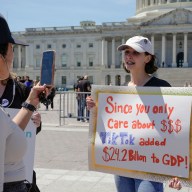By Richard Leong
NEW YORK (Reuters) – A dollar rout intensified on Wednesday after U.S. Treasury Secretary Steven Mnuchin said a lower greenback was “good for us” – though a weaker U.S. currency may not prove a long-term economic boost.
It was a highly unusual remark for a Treasury secretary, as it is seen as a break from previous White House administrations’ public stance for a stronger U.S. currency, even as they wrangled with trade partners to open up their local markets to U.S. companies.
“Treasury secretaries in the past have always spoken in favor of a stronger dollar, not a weaker dollar,” said Sireen Harajli, currency strategist at Mizuho in New York.
Yet, while a weaker dollar is seen helping American exporters to compete abroad, it may undermine the greenback’s status as the world’s top reserve currency and fan concerns about a protectionist trade agenda espoused by U.S. President Donald Trump, who is set to speak in Davos on Friday. On Tuesday, Trump signed into law a steep tariff on import solar panels and washing machines to counter lower-cost products from China and other Asian producers.
A weaker dollar could also have repercussions on stocks, corporate bonds and other risky investments.
“If the dollar slide were to accelerate, then foreign capital flows could decline rapidly, which would cause a sudden rise in interest rates which could shock markets and lead to unintended declines in risk assets like stocks which could damage growth,” said Guggenheimer Partners’ global chief investment officer Scott Minerd in New York.
In another unusual move, Commerce Secretary Wilbur Ross later attempted to dial back Mnuchin’s remark, telling CNBC television that the Treasury secretary was “not advocating for a weaker dollar.”
But Ross failed to push back dollar bears.
On Wednesday, the index that tracks the dollar against a basket of currencies on a trade-weighted basis <=USD> fell 0.8 percent to 89.153, the lowest since December 2014.
The euro The currency of the world’s biggest economy also tumbled to a four-month low of 108.97 Japanese yen (Graphic: Dollar Index v Euro – http://reut.rs/2BHqgH1)
SKITTISH DOLLAR
Prior to Mnuchin’s comment in Davos, the dollar had fallen on speculation about overseas central banks moving away from the extraordinary measures they adopted to combat the global credit crisis in 2008 and the global recession that followed. Futures markets signaled speculators last week built the most bearish positioning against the dollar since mid-October.
(Graphic: U.S. Treasuries top foreign holder – http://reut.rs/2DjHnk0)
Analysts in a Reuters poll published on Jan. 5 anticipated a tough 2018 for the dollar coming off its worst annual performance in 14 years when it lost 10 percent.
On Tuesday, the Bank of Japan signaled it would stick with its easy policy stance as inflation remains below its 2-percent goal.
European Central Bank policy-makers will meet on Thursday where traders will look for clues on whether the ECB will pave the way to not renew its 2.55 trillion euro ($3.16 trillion) bond purchase program when it expires in September. The euro’s year-long rise, some analysts say, would offer ECB officials a reason not to change its course.
“The strength of the euro is not something the ECB wants to exacerbate with the euro knocking on $1.24,” said Omer Esiner, chief market strategist with Commonwealth Foreign Exchange in Washington. Some analysts said the dollar selloff is overdone as the economy remains firm footing and the Federal Reserve is expected to raise rates further in 2018.
Moreover, U.S. yields remain low enough that the greenback remains an attractive currency to fund “carry trades,” or bets on buying higher returning assets such as emerging market bonds with money raised by selling dollars. DOLLAR’S STATUS
In addition to anxiety about trade friction, Mnuchin’s dollar remark fueled further questions about the dollar’s status among foreign central banks and sovereign wealth funds as the world’s top reserve currency. A severe deterioration in the greenback can end up hurting the U.S. economy by ballooning the trade deficit as a result of higher import costs. It might also spur foreigners to pull money out of the country if a further weakness in the dollar sours investing in the United States. In November, China and Japan, the two largest foreign U.S. creditors, scaled back their holdings of U.S. Treasuries.
Last month, the International Monetary Fund said the dollar’s share of global currency reserves shrank in the third quarter of 2017 to 63.5 percent, its smallest since mid-2014.
Despite these developments and possibly more protectionist rhetoric from the White House, the dollar should remain on its perch as the No. 1 reserve currency.
“I don’t think this will deteriorate the view of the dollar as a reserve currency of that world. That will be radical change,” said Lennon Sweeting, chief market strategist at XE in Toronto. (Graphic: Erosion of Dollar’s Top Reserve Currency Status – http://reut.rs/2DFLnLD)
(Additional reporting by Karen Brettell, Saqib Iqbal Ahmed, Jennifer Ablan; editing by Diane Craft)


















